Nearly 60% of the World’s Hungriest People Live in Just a Few Countries. Why?
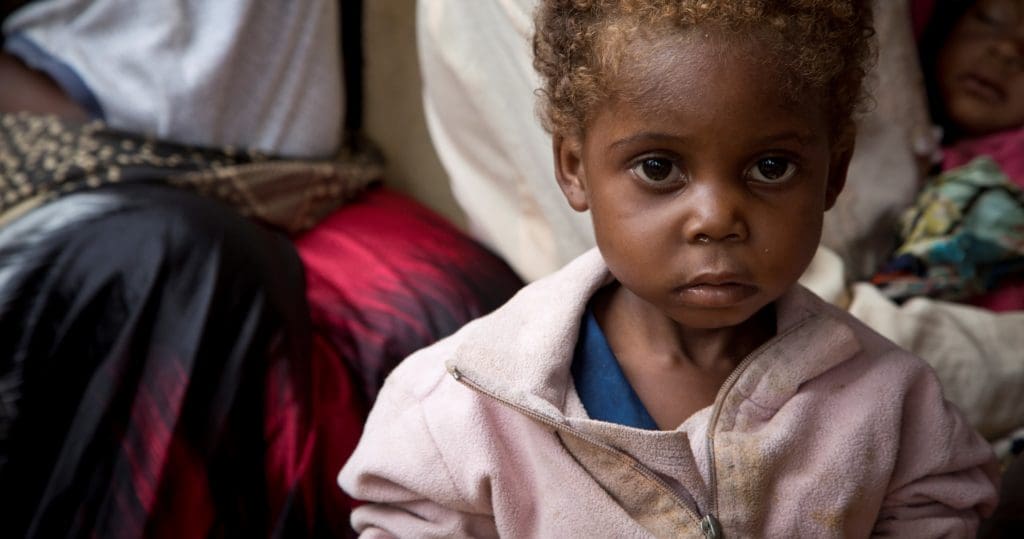
The number one cause of hunger around the world is clear.
The United Nations World Food Programme (WFP) delivers over 4 million tons of food to over 100 million people each year in more than 120 countries and territories. Most of them are concentrated in just a few countries. Why?
The #1 driver of hunger on the planet is man-made conflict. Conflict tears families apart, forces entire communities from their homes, destroys infrastructure and disrupts food production. It’s a vicious force, and one that’s pushed 139 million innocent civilians to the most extreme levels of hunger imaginable.
As U.N. World Food Programme Executive Director David Beasley says, “Wars and conflicts are driving hunger in a way we’ve never seen before.”
Related articles you might be interested in:
- 6 Current Conflicts in the World Today
- Hunger Hotspots: 4 Countries Face Famine
- War Devastates Kids, Communities and Countries
By the Numbers, and the Countries
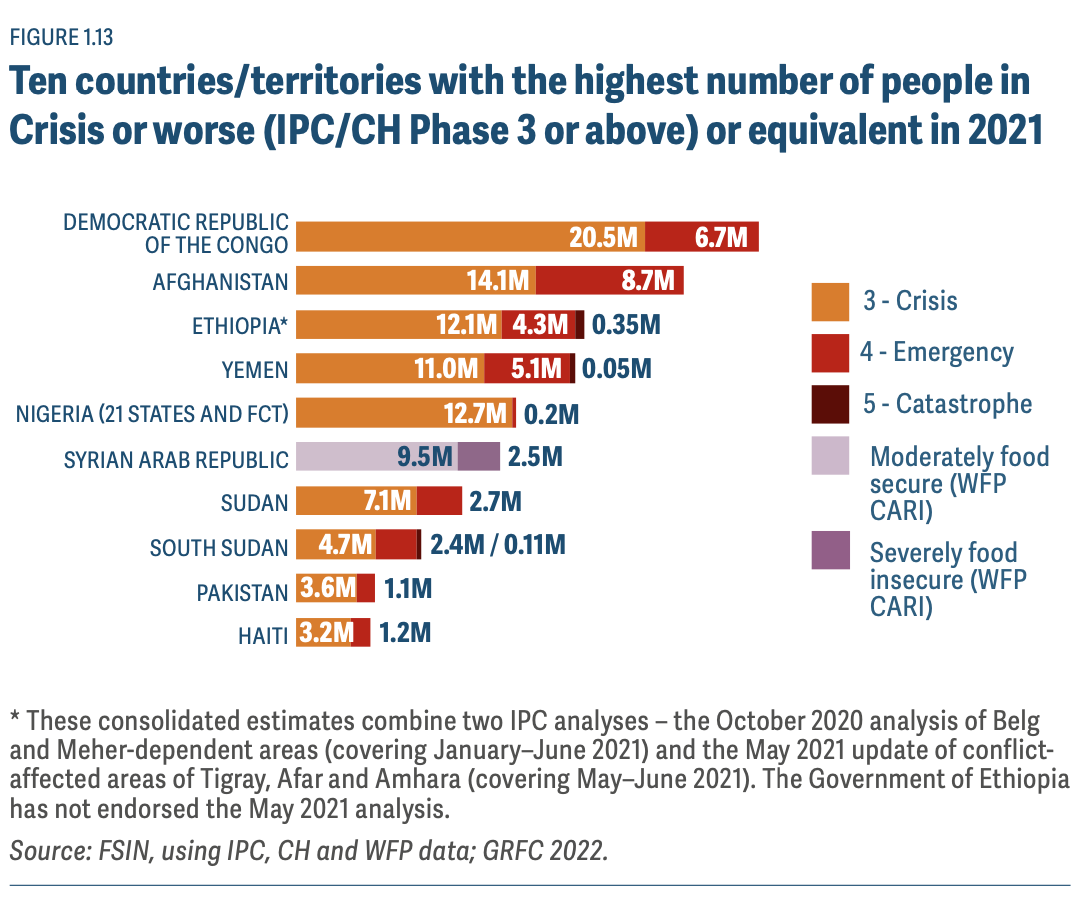
The latest Global Report on Food Crises found that in 2021, 134 million people faced severe hunger in ten of the world’s hungriest countries.
The worst food crises in the world are driven almost entirely by conflict, which is why nearly 80% percent of the U.N. World Food Programme’s budget is spent on conflict-affected countries. The link between conflict and hunger is not only undeniable, it’s persistent and deadly.
Below you’ll see six examples of how violence causes such extreme levels of hunger and how we’re responding.
The Democratic Republic of Congo
The DRC has surpassed Yemen as the world’s largest hunger crisis. Decades of civil war have left millions dead or displaced. The number of severely hungry people skyrocketed from 13M in 2019 to over 26M in 2022 due to a toxic mix of conflict, displacement, disease, economic decline, natural disasters and COVID-19. One in three Congolese – a record high –are now hungry. We’re scaling up operations across the country to save lives.

Millions of children suffer from malnutrition and don’t get enough to eat in the DRC: All they’ve known is war.
Yemen
More than 17 million people – over half of the population – wake up hungry every day: It’s a devastating reminder of what conflict can do to a country. More than 2 million children are severely malnourished, and 500,000 are at risk of dying without treatment. And warring parties have disrupted humanitarian operations, making our work difficult and dangerous. But we’re still working day and night to feed nearly 13 million Yemenis every month.
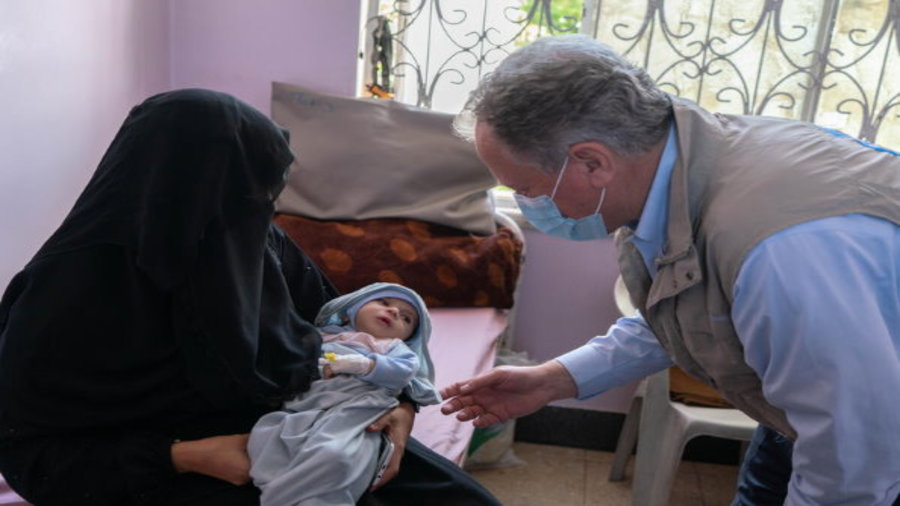
U.N. World Food Programme Executive Director, David Beasley, leans down to speak to mother and baby in Yemen.
You can help send food to hungry families suffering from conflict.
South Sudan
South Sudan is facing its hungriest year ever due to a deadly combination of a years long civil war and erratic weather. Three consecutive years of widespread flooding and localized areas of drought, coupled with increasing violence have pushed communities to their limit. U.N. World Food Programme aid has prevented famine from sweeping across the entire country – but tens of thousands of people are likely to starve if they don’t receive food assistance soon.
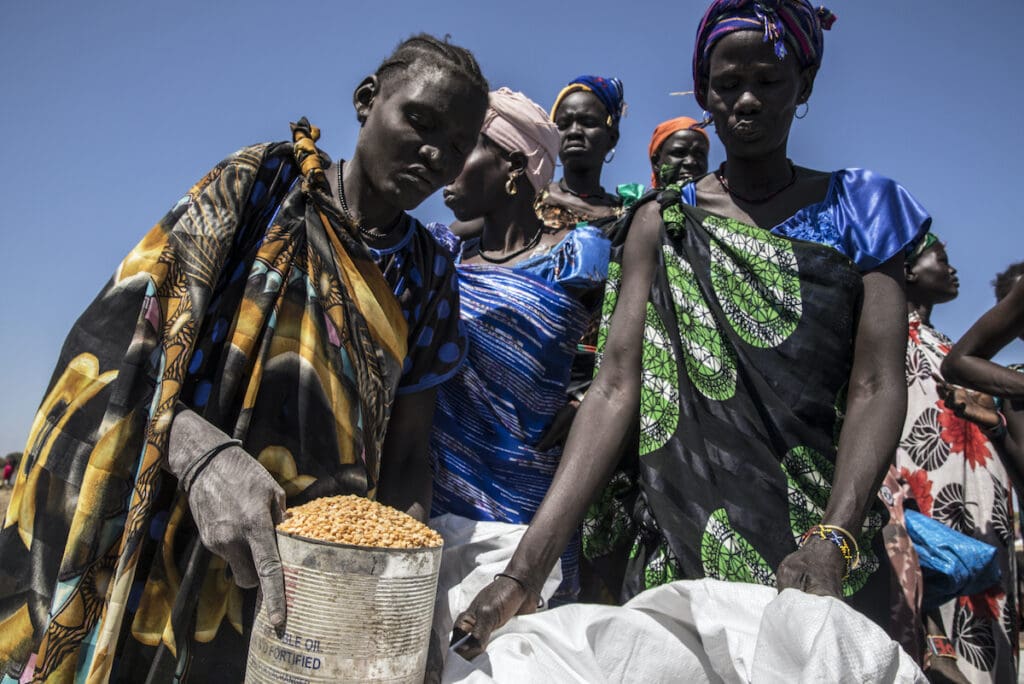
Women collect bags of U.N. World Food Programme food assistance delivered via air drops in a South Sudanese village.
Syria
A decade of war has pushed more than 12.4 million Syrians to high levels of hunger. More than 6.5 million people are displaced inside the country, many of whom now live in squalid, overcrowded camps, and another 5.7 million have fled as refugees to neighboring countries. Syrian children have borne the brunt of the war’s effects. The crisis has become one of our most complicated operations, but we continue to serve over 5 million Syrians each month.
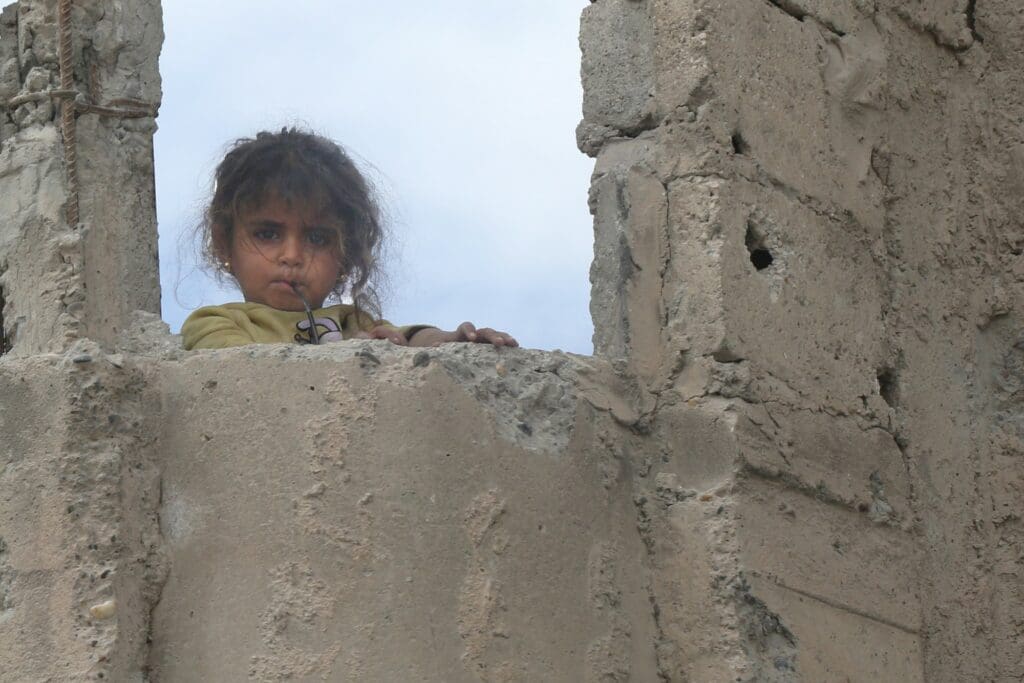
A young girl stands in the rubble of Raqqa, a Syrian city of debris and frequent target of conflict. Residents say their homes have either been destroyed or looted.
Nigeria
Conflict and poverty are wreaking havoc in Nigeria, with the northeast part of the country an epicenter of climate change and conflict. Attacks by armed groups and counter-insurgents have forced 3 million people from their homes and cut them off from their farms. In the conflict-affected states of Borno, Adamawa and Yobe, 2.4 million Nigerians are facing severe hunger.
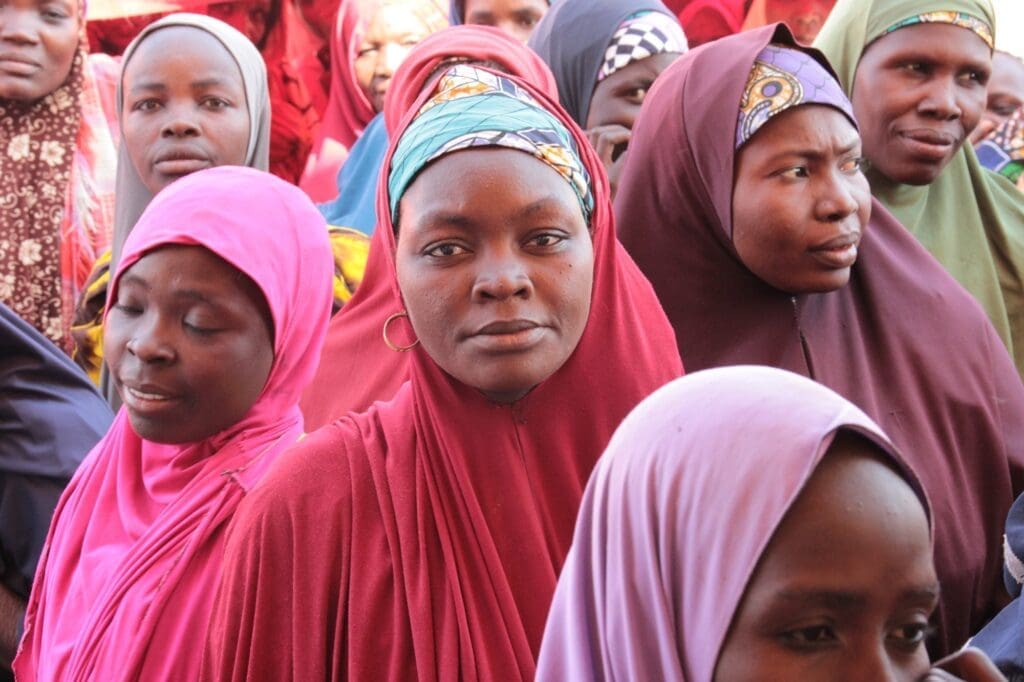
Women displaced by violence line up for U.N. World Food Programme assistance at Muna host community, northern Nigeria.
Ethiopia
Conflict has spread and intensified in northern Ethiopia, with the threat of famine trailing behind in its wake. Over the last 16 months, violence has disrupted humanitarian aid, planting seasons and streams of income. Nearly 40% of people living in the Tigray Region, an early epicenter of the conflict, are facing severe hunger. In the last year, the U.N. World Food Programme has reached 4.4 million people in northern Ethiopia with food and nutrition assistance.
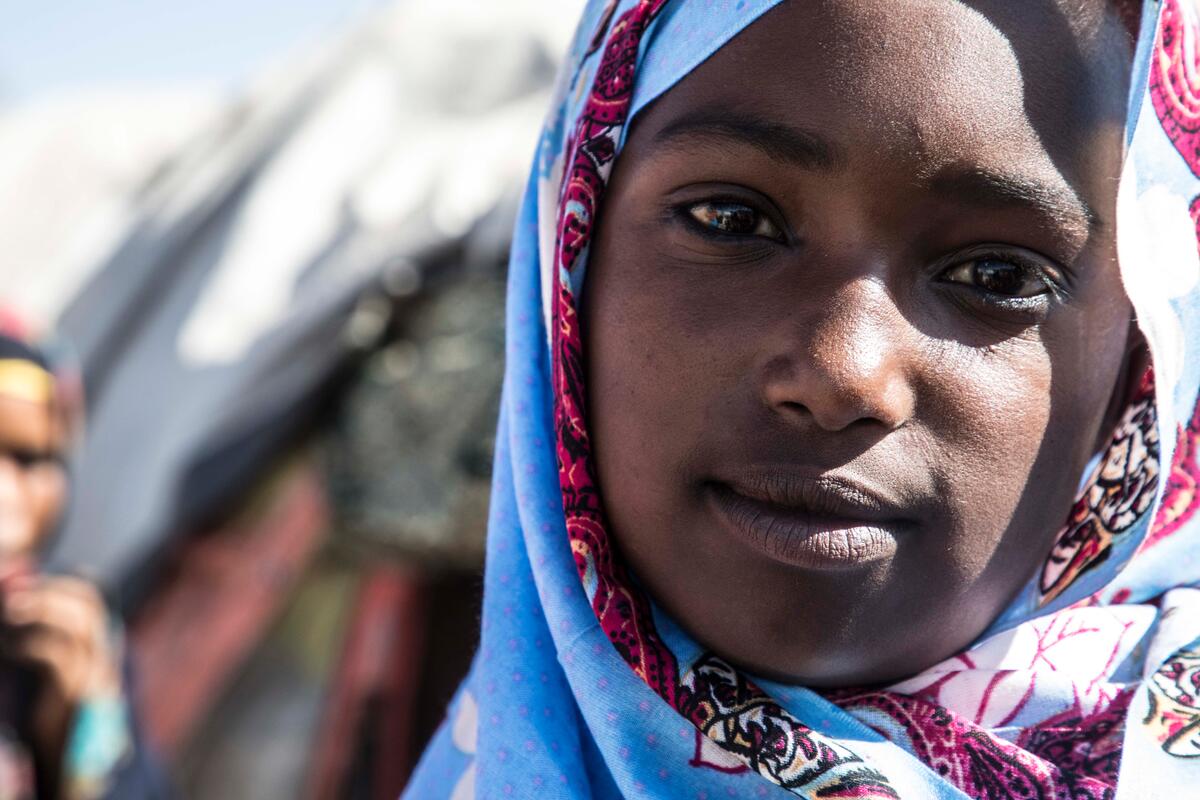
Ethiopia is facing a catastrophic combination of conflict in the north and climate shocks in the south – which are pushing more than 15 million people deeper into hunger.
It’s devastatingly clear that communities in these countries are suffering, stuck in a vicious cycle of conflict and hunger that could dash their hopes for a stable, healthy future.
“Man-made conflict is driving instability and powering a destructive new wave of famine that threatens to sweep across the world. The toll being paid in human misery is unimaginable,” said U.N. World Food Programme Executive Director Beasley. “Beyond the immediate crisis, we need to invest in peace, so that in the future, desperate families are not forced to the brink of survival by the bullet and the bomb.”
By promoting peace and ending violent conflict, the world could save billions of dollars in humanitarian food assistance costs, and millions of lives every year. Before we reach that goal, and as the recipient of the 2020 Nobel Peace Prize, the U.N. World Food Programme is there before, during and after upheaval to help families survive and recover.
Many of these countries are also the locations of refugee emergencies. Learn about the largest refugee crises in the world today.
For more information, view the 2022 Global Report on Food Crises.
Help alleviate the suffering of people caught in conflict by sending lifesaving food.




